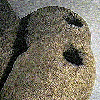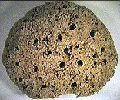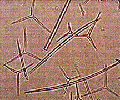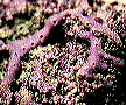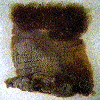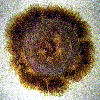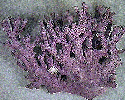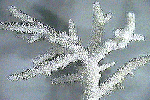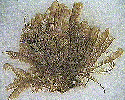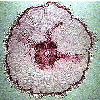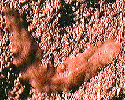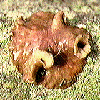Simple Invertebrates
Be sure to write about what you are learning in the lab section of your notebook. You will be expected to answer questions about the lab activity during the lab self test and lab quiz. It helps to have your text and coloring books open beside you for support.
| Refer to the Assigned Readings Below: | |
| Marine Biology Textbook | Chapter 7, pages 118 to 125 |
| Marine Biology Coloring Book | Plates 22 to 25 |
|
Phylum
Porifera (pore bearing animals): Sponges
|
||
|
1.
Water flows through the body of a sponge entering through many small
pores called ostia and exiting out a larger opening called the osculum.
|
||
|
2. Sponges have a skeleton made up of many tiny skeletal elements called spicules. |
||
|
3. The shapes of sponges are highly variable. Some grow flat and are called encrusting, while others form barrel shapes and are called tubular. |
||
|
Phylum
Cnidaria (sting cell animals): Hydroids, Jellyfish, Sea Anemones,
and Corals
|
||
|
1.
A sea anemone has the polyp basic body form. It's attached to the
bottom with its pedal
disc and its mouth and tentacles face up.
|
||
|
2. Reef-building corals are colonial. Each individual in the colony secretes a skeletal cup of stony calcium carbonate. |
||
|
3. Both corals and anemones have tentacles that are covered with specialized cells which discharge nematocysts. These stinging cells are used in capturing prey and for defense. |
||
|
4. The polyps of marine hydroids generally occur as colonies forming branched structures. |
||
|
5.
Individual polyps of Obelia are specialized for feeding or
reproduction.
|
||
|
6. Hydroid colonies are either attached to the bottom as in Obelia or floating as in Physalia. |
||
|
7. A jellyfish has the medusa basic body form. It swims freely with its mouth and tentacles facing downward. |
||
|
8. Jellyfish have an umbrella shape with a mouth bearing manubrium hanging from the center. |
||
|
9. The moon jelly Aurelia has a set of four oral arms which surround the mouth and are used to scrape food from the edges of its body. |
||
|
Phylum
Platyhelminthes (flatworms): Turbellarians, Flukes, and Tapeworms
|
||
|
1.
The great majority of flatworms are marine living in sand or under
rocks.
|
||
|
2. Flatworms locomote with a gliding motion by means of rippling muscles and beating cilia on their undersides. |
||
|
3. Some flatworms, such as flukes and tapeworms, are parasitic living inside other animals.
|
||
|
Phylum
Nematoda (roundworms): Roundworms
|
||
|
1.
The typical nematode body is elongate, cylindrical, and tapered
at both ends.
|
||
|
2. Tiny roundworms are present in prodigious numbers in marine muds where they feed mostly on bacteria and organic matter.
|
||
|
3. Many roundworm species are predators of marine plants and animals. |
||
|
Lab
Activity 4.2 Complex Worms
and Lophophorates
|
